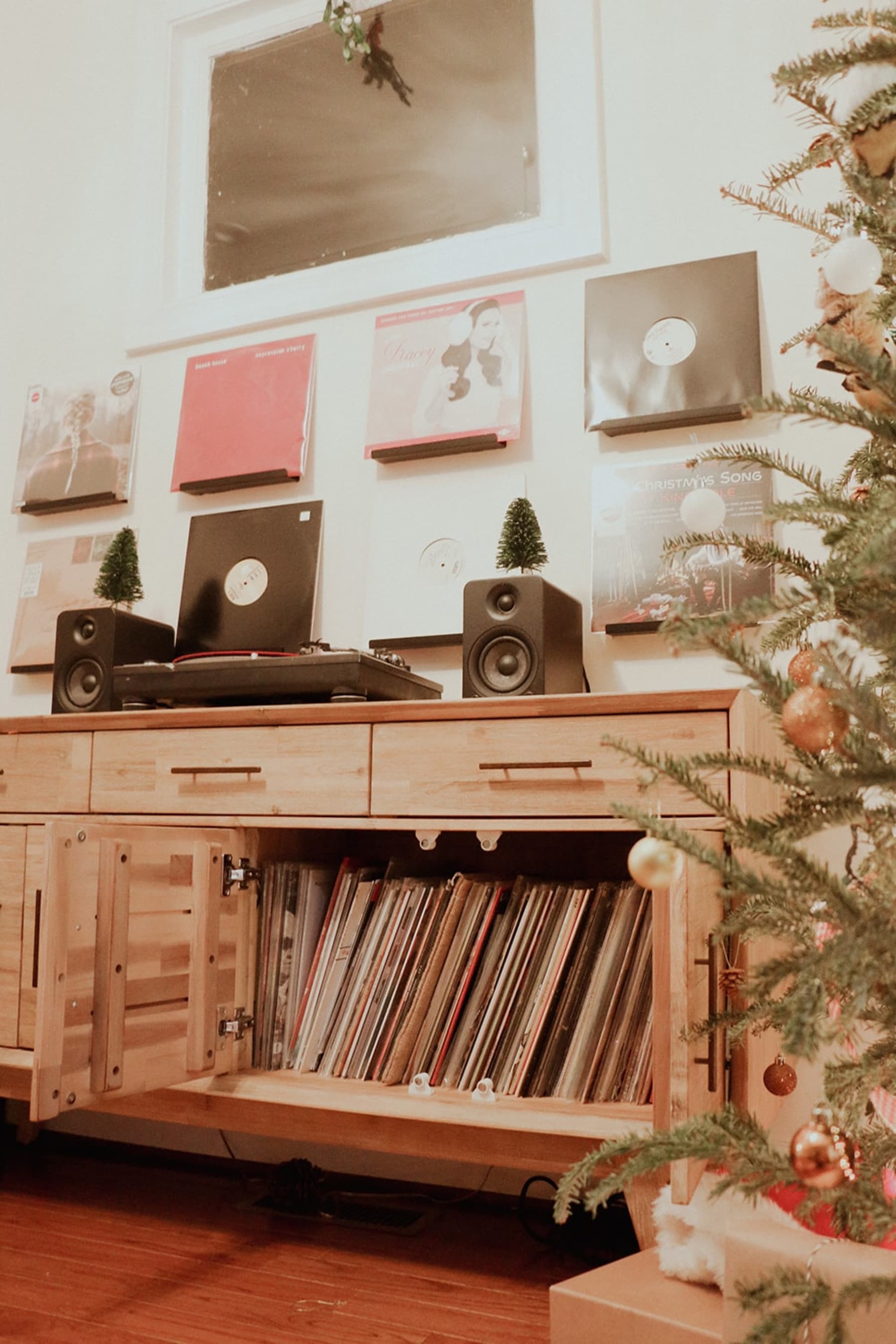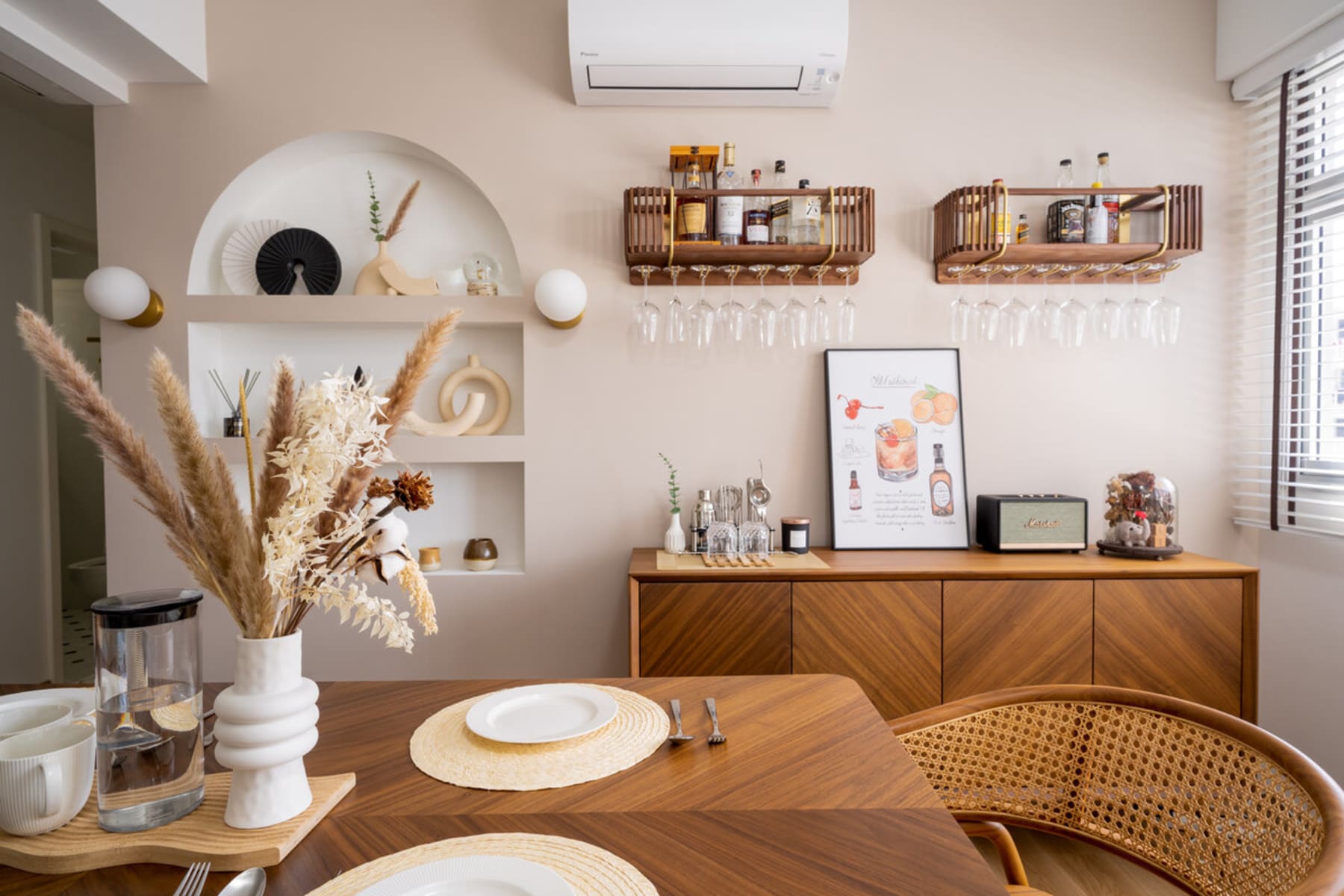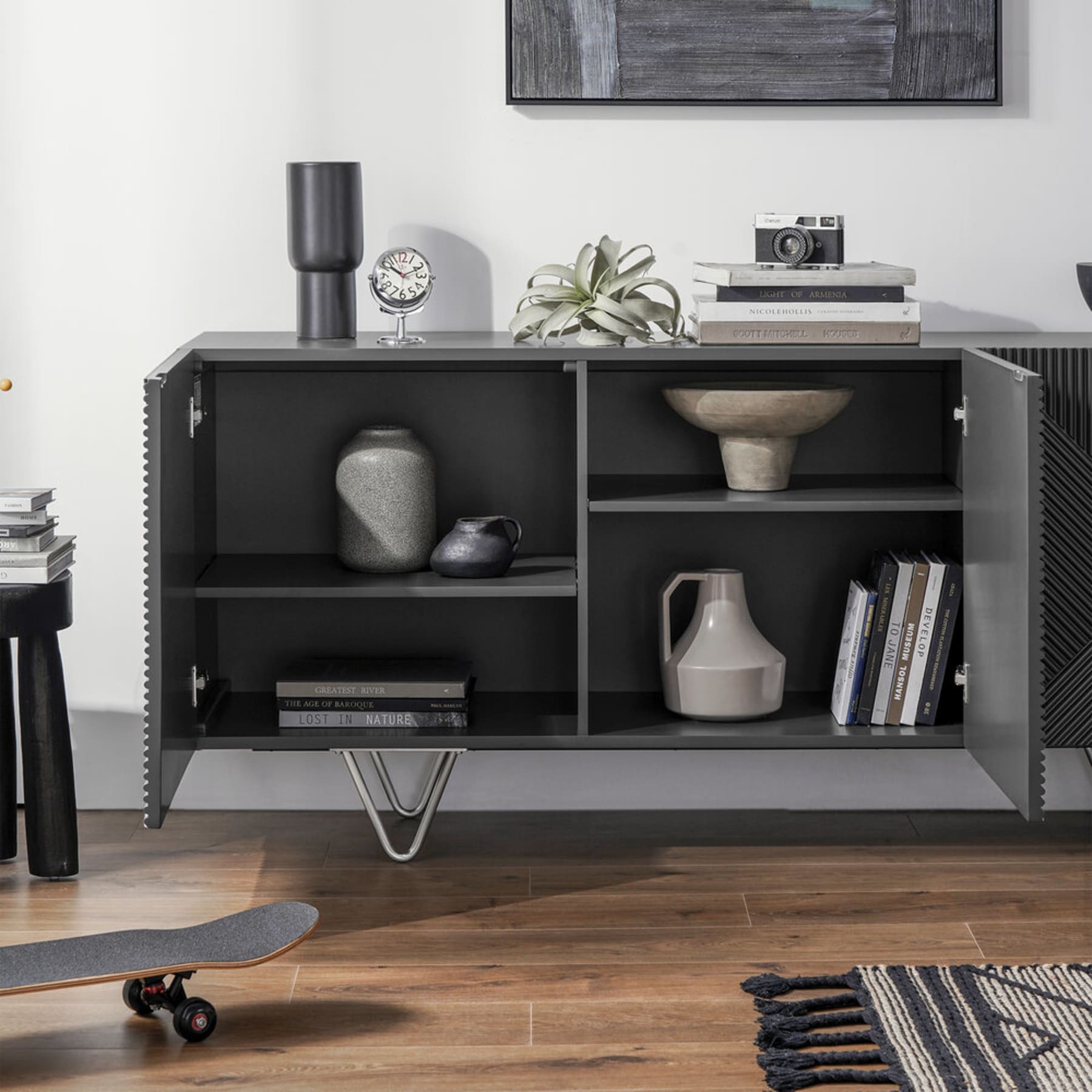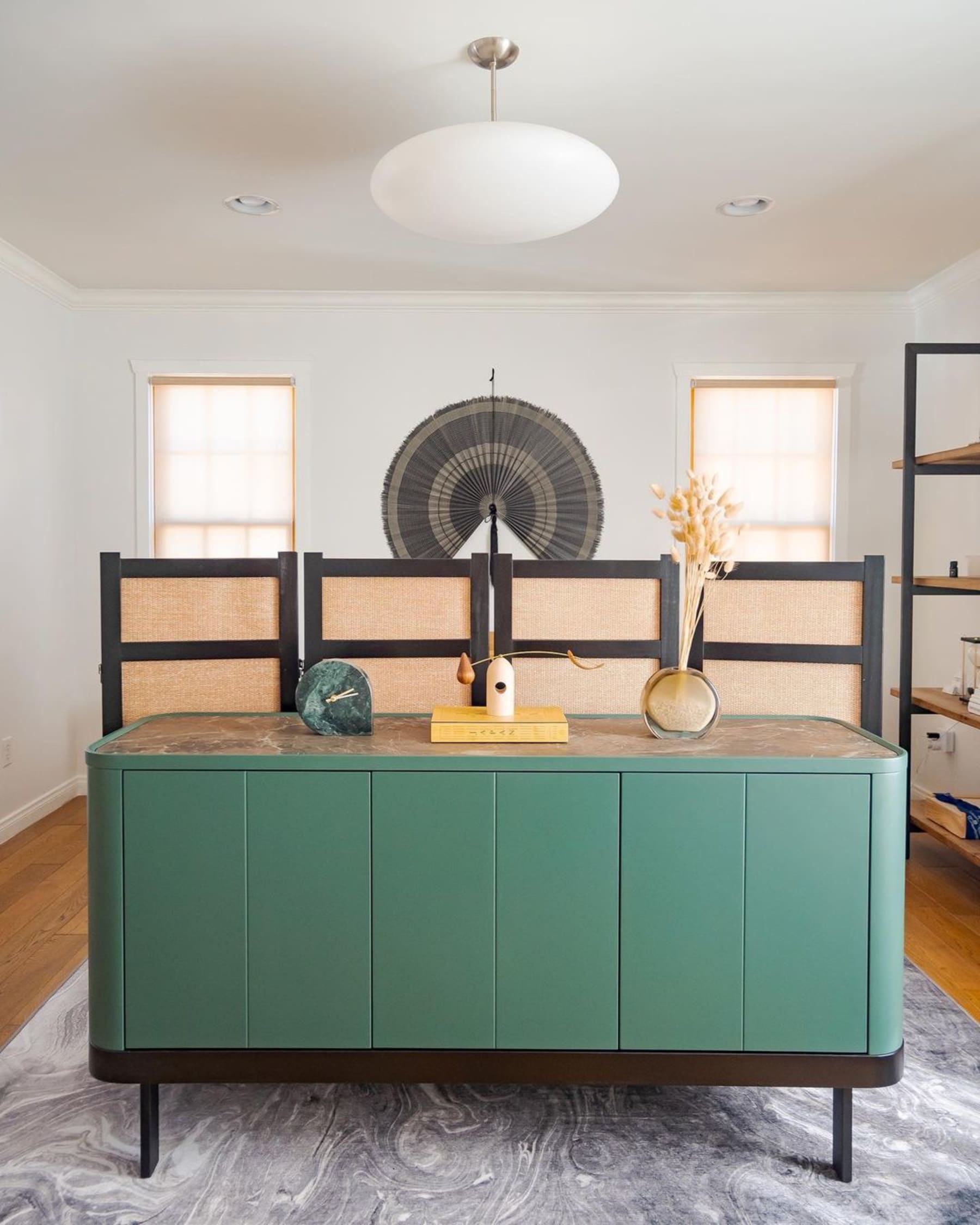
What Is a Sideboard and What Is It Used For?
When it comes to furniture pieces that effortlessly combine style and functionality, sideboards are definitely one of them. These versatile and timeless additions to your home decor not only offer ample storage space but also serve as eye-catching design elements.
But what exactly is a sideboard, and what is it used for? In this comprehensive guide, we will explore the world of sideboards, from their origins to their diverse applications in modern interiors.
What is a sideboard?
In the 18th and 19th centuries, sideboards were a status symbol among the upper class. Sideboards were mainly placed against a wall in dining rooms to store cutlery, table linens, and plates. That’s how it derived its name - at the side of the room.
Over time, sideboards have evolved to cater to changing needs and interior design trends and are now used in living rooms, bedrooms, and even entryways. Modern-day sideboards feature minimalist designs and clean lines that seamlessly blend with various interior styles. They also usually have a low profile and have several storage compartments for your essentials.
Recommended read: Sideboard vs Buffet vs Credenza: What's The Difference?
What’s the purpose of a sideboard?
For storage needs

@heyseantaylor uses the Miles Sideboard to store their records and record player.
One of the primary functions of a sideboard is to provide additional storage space. The combination of drawers, shelves, and cabinets allows you to organise and store a wide range of items.
In dining rooms, sideboards can hold tableware, serving dishes, and glassware. In living rooms, they can house books, media equipment, and display cherished decor pieces. They are also practical additions to bedrooms, offering storage for bedding, clothing, or bulky winter wear.
To serve food
If you’re planning to use sideboards for their original purpose, they serve as great functional extensions of the dining table during social gatherings (especially if you have a small dining table!).

@cozyspaceinterior uses the Lily Sideboard as a drink station. Also pictured: The Lily Dining Table.
They can be used to lay out a buffet-style meal, as a dessert station, or just to place extra dining ware. The spacious flat surface offers a convenient area for food, drinks, or even a stylish coffee bar setup, which takes your hosting game to the next level.
As a vanity table
With the addition of a mirror and a stool or armchair, a sideboard can be transformed into a stylish vanity or dressing table.
The drawers can hold makeup, jewelry, and hair accessories, while the surface becomes a dedicated space for getting ready each day. This allows you to create a functional and elegant grooming area within your bedroom.
For decoration
Sideboards are great for pieces to showcase your personality and style - both as a decoration itself and as a platform for decorative items.
The top surface can be adorned with items like vases, photo frames, or candles. Open shelves can display books and collectibles, adding visual interest to the room.
Recommended read: 6 Ways To Decorate Sideboards and Cabinets

The Harper Sideboard features a unique oval silhouette and sliding tambour doors.
Pieces like the Lily Sideboard or the Harper Sideboard are decorations themselves - drawing the eye naturally to their striking designs and creating a focal point in any space.
To divide rooms
If you have an open-concept layout in your home, sideboards can be used strategically to divide the space into separate functional areas.
For example, placing a sideboard between the dining and living area can create a visual distinction and helps to define each space. Not only does this add structure to the open layout but also provides additional storage and display opportunities.
What to look for in a sideboard
Size and proportion
When selecting a sideboard for your space, considering the appropriate size is crucial to ensure it fits harmoniously and serves its intended purpose effectively. Also, ensure the sideboard doesn't overpower the surrounding furniture or obstruct traffic flow.
A sideboard that is too large in comparison to other furniture pieces may create a sense of imbalance, while one that is too small may appear insignificant or get lost in the room. Aim for a size that complements the existing elements and maintains a sense of visual harmony.
Additionally, the size of the sideboard will affect the amount of storage space you have.
Storage needs
Evaluate your storage requirements and prioritise the configuration that suits your needs. Do you need space for larger items like serving platters, books, or electronic devices? Will you be storing smaller items that require drawers or compartments to keep them organised?

The Tate Sideboard has ample storage space for all your items.
Depending on what you need to store, this affects the size and design of the sideboard. You can also opt for a sideboard with adjustable shelves or removable inserts for extra flexibility for future needs.
Style
Choose a sideboard that aligns with your existing style to maintain visual harmony.
For example, if you have a modern interior, opt for a sleek, minimalist sideboard with clean lines, like the Sawyer Sideboard. If your space leans more towards a rustic or farmhouse style, consider a sideboard made with light-coloured wood, such as the Miles Sideboard.
Pay attention to the hardware and details on the sideboard, such as the finishes, handles, and leg styles. If you’re going for a unique and bold style, look for details such as carved motifs, inlays, or other distinctive features and textures that can enhance the overall aesthetic.
Maintenance and care
Even though sideboards are relatively easy to clean and care for, there are still some things to take note of. Different materials and finishes may require specific cleaning methods or regular maintenance.
For example, a wooden sideboard (like the Hudson Sideboard) may require periodic oiling to maintain its appearance, which is not needed for a sideboard with a ceramic tabletop (like the Luna Sideboard).

The Luna Sideboard is designed by Polish designer Krystian Kowalski. Picture credits: @mybelonging
Furthermore, if you plan to use the sideboard to serve food, consider using coasters or placemats when food is on the countertop, and clean it regularly to prevent smells or stains.
Do you need a sideboard?
A sideboard is a versatile furniture piece that adds functionality and aesthetic value to your home. With its storage capabilities, display potential, and serving functionality, it serves as a practical and stylish addition to your home.
By carefully selecting the right sideboard that suits your needs and complements your interior style, you can unlock the true potential of this timeless piece of furniture.
FAQs
What is the difference between a sideboard and a buffet?
While distinctions between the two exist, there aren’t any major differences as buffets are similar to sideboards in terms of design and function. The terms “sideboard” and “buffet” are often used interchangeably in modern usage. The choice between the two ultimately depends on personal preference, intended use, and the specific design and functionality that best suits your needs.
What room does a sideboard go in?
While sideboards were primarily used in dining rooms back in the day, changes in interior design trends and needs have resulted in sideboards being used anywhere! They can be used in bedrooms, living rooms, entryways, and even outdoors.